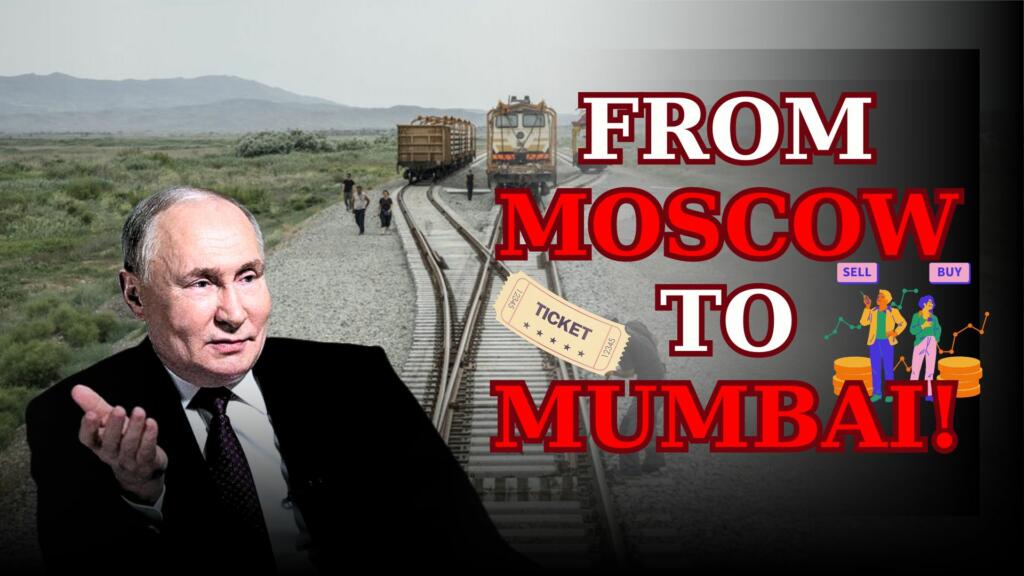Amidst escalating geopolitical tensions and mounting economic sanctions from Western powers, Russia finds itself compelled to reevaluate its economic strategy. Historically reliant on trade with Europe, recent developments such as the conflict in Ukraine have necessitated a shift in focus. As traditional trade routes become increasingly blocked, Moscow is pivoting towards the East, seeking to forge new pathways for commerce and cooperation. Central to this endeavor is the development of the Southern Route, including ambitious infrastructure projects like the railway linking Russia with Iranian ports on the Persian Gulf. Through these initiatives, Russia aims to diversify its trade portfolio, reduce dependency on Western markets, and mitigate the impact of sanctions.
The Southern Route
The development of the Southern Route represents a significant shift in Russia’s economic strategy, as it seeks to navigate the challenges posed by Western sanctions and diversify its trade routes. The cornerstone of this strategy is the construction of a $1.7 billion railway connecting Russia to Iranian ports on the Persian Gulf. This ambitious infrastructure project holds the promise of unlocking new trade opportunities and facilitating faster and more efficient access to key markets in Asia and the Middle East.
At the heart of the Southern Route lies the goal of reducing Russia’s reliance on European trade routes, which have been increasingly constrained by Western sanctions. By forging stronger connectivity with Iran and tapping into the Persian Gulf’s strategic location, Moscow aims to bolster its economic resilience and expand its reach into dynamic markets such as Mumbai, India’s bustling commercial hub.
A Revolutionary Project
President Vladimir V. Putin of Russia has heralded the new Southern Route as a game-changer, anticipating a significant reduction in cargo transit times. He envisions a scenario where shipments from St. Petersburg to Mumbai can be completed in just 10 days, a drastic improvement from the current 30 to 45 days required for traditional routes. This ambitious goal underscores Putin’s commitment to transforming Russia’s trade landscape and bolstering connectivity with key markets in Asia and the Middle East.
Russia’s Ambitious Agenda
Russian officials have lauded the Southern Route as a “breakthrough revolutionary project,” poised to compete with established trade arteries like the Suez Canal. This designation reflects the magnitude of the undertaking and its potential to reshape global trade dynamics. By providing a faster and more efficient alternative to existing routes, the Southern Route aims to position Russia as a key player in the international trade arena, driving economic growth and prosperity.
Also Read: The Mega Opinion Poll: Modi Remains BJP’s Trump Card
Steering Trade Restrictions
In the face of mounting sanctions, Russia has deployed a range of tactics to circumvent trade barriers and maintain essential supply chains. From importing machinery from India to procuring arms from Iran, Moscow has forged partnerships with nations willing to defy Western pressures. Furthermore, the influx of consumer goods, often routed through Gulf countries and Turkey, serves as a vital lifeline for sustaining living standards amidst geopolitical turmoil. Despite Western attempts to isolate Russia, these alternative trade channels underscore Moscow’s resilience and adaptability in the face of economic adversity.
Reviving Historical Connectivity
Beyond the Southern Route, Russia is actively seeking to revive historical trade corridors, particularly in the Caucasus and Central Asia. The restoration of an old Soviet railway linking Moscow with Iran and Turkey exemplifies Moscow’s efforts to enhance connectivity and tap into lucrative markets. However, geopolitical complexities in regions like Armenia and Azerbaijan pose significant challenges to these infrastructure projects. Disputes over control and regional alliances threaten to impede progress, underscoring the intricate balance of power in Eurasia.
A Gateway to Opportunity
Upon completion, the North-South Transport Corridor promises to revolutionize trade dynamics in the region, spanning over 4,300 miles and facilitating seamless commerce between Russia, Iran, and beyond. This ambitious project aims to reduce transit times and costs while circumventing Western sanctions, positioning Russia as a key player in the evolving global trade landscape. With trade volumes projected to triple by 2030, the corridor heralds a new era of economic cooperation and connectivity in Eurasia, offering vast opportunities for growth and development.
Also Read: Jet Set Go: Now, India will have “Made In India” Jet Engines
Assessing the Risks
While Russian officials tout the benefits of these new trade routes, skepticism persists among business leaders and analysts. Concerns over the sustainability of partnerships, geopolitical instability, and the potential for further sanctions remain paramount. Critics caution against the risk of entrenching Russia further as a pariah state, dependent on unconventional trade channels to sustain its economy. Moreover, the complex geopolitics of the region, particularly in areas like Nagorno-Karabakh, pose significant challenges to infrastructure development and regional cooperation.
New Economic Landscape
Russia’s pivot to the East represents a strategic recalibration in response to shifting geopolitical realities and Western sanctions. By diversifying trade routes and cultivating stronger ties with Asian and Middle Eastern partners, Moscow aims to mitigate the impact of economic isolation and assert its influence in the global arena. However, the path ahead is fraught with challenges, from geopolitical tensions to logistical complexities. Success will require adept diplomacy, innovative infrastructure development, and a willingness to navigate the complexities of regional politics. Ultimately, Russia’s ability to navigate this new economic landscape will shape its trajectory in the years to come, influencing not only its domestic prosperity but also its geopolitical standing on the world stage. As Russia forges ahead with its geoeconomic pivot, the world watches with anticipation, keenly aware of the implications for global trade and regional stability.
Also Read: Maldives’ Economic Mirage and The Toll of the Missing Indian Tourists
